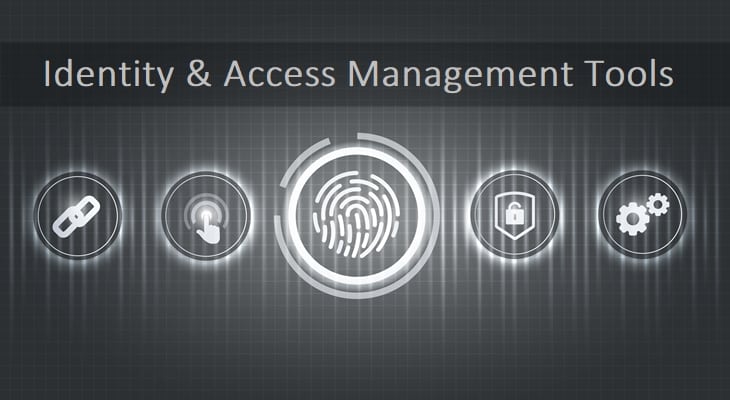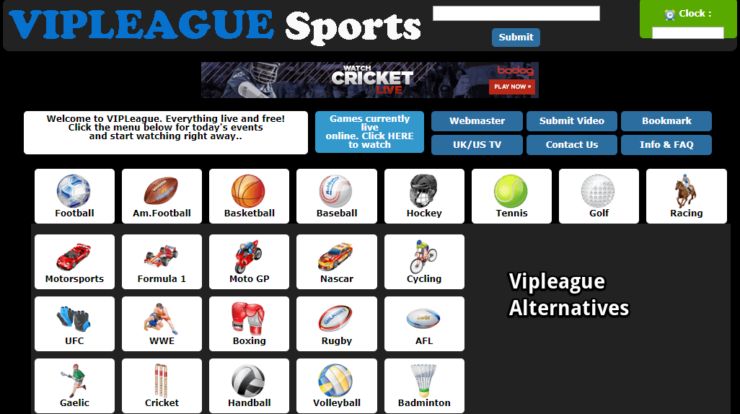
Identity and access management is a framework of corporate procedures, technological advancements, and laws that makes it easier to manage electronic or digital identities. Information technology (IT) administrators can restrict user access to sensitive data within their businesses by putting an IAM architecture in place. Authentication methods used for IAM include single sign-on, two-factor, multi-factor, and privileged access management. Additionally, these technologies offer the capability of safely storing identification and profile data as well as data governance features to guarantee that only information that is required and pertinent is shared.
IAM systems may be set up on-site, made available by a third-party vendor under a subscription-based cloud model, or set up in a hybrid approach.
IAM fundamentally consists of the following elements:
- How individuals are identified in a system (understand the distinction between identity management and authentication).
- How roles are identified in a system and how they are assigned to individuals.
- How individuals and their roles are added, removed, and updated in a system; How levels of access are assigned to individuals or groups of individuals.
- How the system is secured.
Advantages of IAM
IAM technology may be employed to automatically begin, capture, record, and manage user identities and the associated access rights. The following IAM advantages are gained by an organization:
- All people and services are correctly authenticated, approved, and audited, and access rights are distributed in accordance with policy.
- Businesses that handle identities correctly have more control over user access, which lowers the danger of internal and external data breaches.
- By saving time, money, and effort over manually managing network access, automating IAM solutions enables organizations to function more effectively.
- The adoption of an IAM framework can make it simpler to enforce rules surrounding user authentication, validation, and privileges and handle concerns with power creep in terms of security.
- IAM systems enable businesses to demonstrate that corporate data is not being exploited, assisting them in better adhering to legal requirements. Companies can also show that any data required for audits is readily available upon request.
Businesses that use IAM solutions and adhere to relevant best practices might earn competitive benefits. IAM solutions, for instance, enable a company to grant access to its network across mobile applications, on-premises applications, and SaaS without compromising security to people outside the organization, such as clients, partners, contractors, and suppliers. Better cooperation, more productivity, greater efficiency, and lower operational expenses are made possible as a result.
Why Identity and access management Tools Are So Popular?
Once a business has many locations, remote employees, and the need to restrict access to cloud-based resources or SaaS applications, identity and access management systems become crucial. Smaller firms frequently manually manage access to each resource, but as the organization grows or the value of the cloud resources increases, delays in lifecycle management become increasingly expensive.
Delaying access to applications for prospective hires costs organizations time and money. Organizations run the risk of data theft or sabotage if they wait to remove access from departing personnel. IAM may also serve as the foundation for other security efforts like secure access service or zero trust.
Top 10 Identity and Access Management Applications
Take a look at some of the best identity and access management tools for you to try in 2023
1. SolarWinds
SolarWinds Access Rights Manager meets all of the requirements for a top-tier IAM product. This package manages access privileges as well as resource sensitivity, auditing resource access, and identifying vulnerable accounts. It is a data loss protection system, a data compliance auditing tool, and an access rights management system all rolled into one.
The Access Rights Manager’s primary role is to offer greater control over user credentials than the regular Active Directory interface provides. Although the Access Rights Manager cannot compel Active Directory to do more operations than its interface permits, it can expand its capabilities beyond those of AD by monitoring resource-user relationships and user account activity.
The Access Permissions Manager runs on Windows Server and is primarily concerned with Active Directory; therefore, it maintains all systems for which AD creates access permissions. OneDrive, file servers, Microsoft 365, SharePoint, and Exchange Server are all included.
Key characteristics include:
- AD object management front-end
- Replication of domain controllers
- Reporting on compliance
- Password administration
- Distribution of credentials
2. CyberArk
CyberArk views identity as the foundation of a security strategy and provides a suite of products for identity management, privileged access, secrets management, endpoint privilege protection, cloud privilege security, and workforce and customer access. When abnormal activity is observed, behavior analytics creates a baseline for users and can trigger alerts and access modifications.
Features
- Allows users to enter while utilizing artificial intelligence (AI) to keep hazards out.
- Continuously examines behavioral signals to ensure that users are who they claim to be.
- Multi-factor authentication with single sign-on
- Consolidate critical security technologies and make policy enforcement easier.
- A privileged approach to identity protection
- Password management option
3. ManageEngine
ManageEngine ADManager Plus is a solution that can serve as a front-end for many Active Directory instances. These AD solutions can encompass a variety of services, including NTFS storage, Microsoft 365, and your network permissions system.
Key characteristics include:
- Coordination of domain controllers
- Account actions in bulk
- Enforcing password policies
- Cleaning up your account
4. JumpCloud
JumpCloud, a cloud-native platform, offers IAM as well as device and patch management tools. The application allows you to design zero-trust policies, manage users with Cloud LDAP, and utilize Cloud RADIUS to give certificates to devices as a type of multi-factor authentication.
Features
- The Cloud Directory tool enables centralized identity control and lifecycle management.
- RADIUS and LDAP services in the cloud
- MFA, SSO, restricted access, and password management are all examples of security features.
- API services for HR system integration and bespoke process development
- Mobile device management (MDM) and management for Windows, macOS, and Linux endpoints are included.
- Patch management and device intelligence are provided.
5. NordLayer
NordLayer is a new product from the same firm that created NordVPN. This solution differs from a standard VPN service in that it incorporates Zero Trust Access (ZTA) by including an Identity and Access Management service within the package.
Key characteristics include:
- Application-level access restrictions with Zero Trust Access (ZTA).
- Connection safety
6. Okta and Auth0
Okta has long been regarded as a pioneer in the fields of access management, authentication, and single sign-on. Okta provides IAM solutions that support zero-trust principles with decreased complexity through a simple and easy-to-manage SaaS-based approach.
Okta recently bought Auth0 in order to strengthen their position as the industry leader and to provide developers with coded IAM solutions for client IAM and apps. Okta is an IAM specialist that is unaffiliated with other large technological businesses and is publicly listed on the NASDAQ.
Features
- Manage identity securely for apps and multi-cloud scenarios.
- Lifecycle management for user provisioning and deprovisioning is automated.
- Password-less authentication alternatives that are secure
- Multi-factor authentication (MFA) and single-sign-on (SSO) options
- Features for managing privileged access
- Customize Okta with no-code, low-code, or pro-code choices.
- Integrate with third-party apps and systems to improve security and the user experience.
- At scale, directories securely store users and their characteristics.
- Okta Insights collects, analyzes, and disseminates information from the IAM tool.
- Identity Engine allows you to customize authorization, authentication, and registration.
7. Microsoft Azure
In 2014, Microsoft entered the IDaaS (Identity as a Service) market, which eventually resulted in Azure Active Directory. Because it is a Microsoft product, it is ideal for its operating system and the servers that run it; it provides best-in-class interoperability with Windows Server Active Directory.
Key characteristics include:
- Cloud-based
- Microsoft SaaS products are integrated.
- Manages a huge number of accounts
8. OneLogin
OneLogin, a part of One Identity and a Quest Software company, offers a specialized identity and access management solution for both employees and customers. OneLogin also assists developers that wish to include IAM features in their own apps.
OneLogin provides an uncommon option for placing an application on an endpoint computer’s desktop. This desktop program runs with the login password and provides a totally controlled environment for all linked apps and users; no further credentials are required.
Features
- Consistent access to SaaS and on-premises apps with a single click from any device
- Manage app access from a centralized platform with a single UI.
- Federation, single sign-on, and integration are all available. OneLogin Authentication using a SmartFactor
- Adaptive authentication for dynamic multi-factor authentication (MFA) balances usability and security.
- Users are synchronized across several directories, including Workday, Active Directory, G Suite, LDAP, and others, using advanced directory.
- Automation allows you to handle HR data and streamline employee onboarding and offboarding.
- Options for unifying and securing remote access through on-premises Windows servers and PCs
- Option for a OneLogin desktop environment in which the device login serves as the login for all apps.
- OneLogin has a sandbox capability for testing setups.
9. Oracle Identity Cloud Service
Oracle’s Identity Cloud Service (IDCS) is an IAM that is part of Oracle Public Cloud (OPC)—Oracle Cloud, for short—which is a free cloud service that caters to enterprises’ needs ranging from data storage and networking services to application testing space, among other things.
Key characteristics include:
- Cross-platform cloud-based interfaces to AD instances
10. Ping Identity
Ping Identity, another publicly listed IAM pure-play on the NASDAQ, provides a variety of identity and access management products that may be purchased individually. Ping provides IAM for both employees and clients’ consumers, as well as assistance to developers in adding IAM capabilities to websites and applications. In terms of income, Ping Identity is behind Okta; however, as of 2018, the Ping Intelligent Identity Platform was employed by all 12 of the top banks in the United States.
Features
- To handle IAM at scale, administer it across any cloud or user.
- Integrate into a hybrid IT environment
- Confirm user identification and identify probable fraud.
- Provide consistent single sign-on (SSO) and multi-factor authentication (MFA) with dynamic authorization choices.
- Access to resources, data, and sensitive activities should be restricted.
- Constantly monitor risk indicators and API traffic.
- Drag-and-drop workflows with no coding, pre-built templates, and simple A/B testing to evaluate identity orchestration for various processes
Creating the IAM Ecosystem
The use of an identity and access management system may significantly improve security and control over SaaS and cloud services. There are several adjacent technologies that complement and reinforce an IAM solution for enterprises looking to increase security.
Privileged Access Management (PAM), for example, provides specific tools for managing administrators and other elevated and risky access levels. Active Directory security, machine identity security, password managers, and encryption key management all address essential aspects of identity and rights security that might put an organization at risk.
Although it may appear that another technology is always required to adequately safeguard an organization, installing broad, fundamental security layers is always the first and most critical step to take. Adopting an efficient IAM tool should be one of those effective first actions in today’s scattered IT world.













